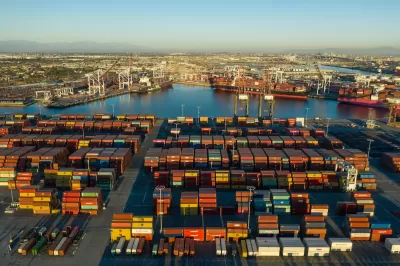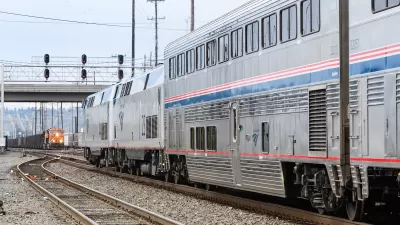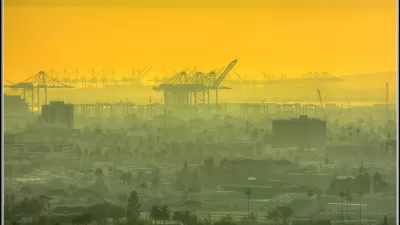The project, which will break ground this summer, is expected to dramatically curb emissions from trucking.

The rail yard at the Port of Long Beach, one of the nation’s busiest, is about to double in size after the port breaks ground on a massive expansion project later this year, reports Isabel Sami in L.A. Business First.
The project centers on a $1.6-billion on-dock rail support facility that will expand the yard from 11 to 48 rail tracks and “enhance on-dock rail capacity at the port’s shipping terminals by expanding the existing Pier B rail yard and connecting it to on-dock rail facilities and the Alameda Corridor railway.”
The entire project is slated for completion by 2032, with some components becoming operational sooner. According to Port of Long Beach CEO Mario Cordero, “completion of the project will reduce nitrogen oxide emissions by 26%, sulfur oxide emissions by 80% and particulate matter by about 85%” by streamlining rail operations and reducing truck trips. “Cordero said the project will get more trucks off the road, cutting emissions from the diesel-powered trucks that the port is looking to eliminate.”
The project is partly funded by $158 million from the California State Transportation Agency and $79 million in grant funding from the Los Angeles County Metropolitan Transportation Authority (Metro), the California Department of Transportation (Caltrans) and the U.S. Department of Transportation.
FULL STORY: Port of Long Beach rail expansion project to break ground this summer

Study: Maui’s Plan to Convert Vacation Rentals to Long-Term Housing Could Cause Nearly $1 Billion Economic Loss
The plan would reduce visitor accommodation by 25,% resulting in 1,900 jobs lost.

North Texas Transit Leaders Tout Benefits of TOD for Growing Region
At a summit focused on transit-oriented development, policymakers discussed how North Texas’ expanded light rail system can serve as a tool for economic growth.

Why Should We Subsidize Public Transportation?
Many public transit agencies face financial stress due to rising costs, declining fare revenue, and declining subsidies. Transit advocates must provide a strong business case for increasing public transit funding.

How to Make US Trains Faster
Changes to boarding platforms and a switch to electric trains could improve U.S. passenger rail service without the added cost of high-speed rail.

Columbia’s Revitalized ‘Loop’ Is a Hub for Local Entrepreneurs
A focus on small businesses is helping a commercial corridor in Columbia, Missouri thrive.

Invasive Insect Threatens Minnesota’s Ash Forests
The Emerald Ash Borer is a rapidly spreading invasive pest threatening Minnesota’s ash trees, and homeowners are encouraged to plant diverse replacement species, avoid moving ash firewood, and monitor for signs of infestation.
Urban Design for Planners 1: Software Tools
This six-course series explores essential urban design concepts using open source software and equips planners with the tools they need to participate fully in the urban design process.
Planning for Universal Design
Learn the tools for implementing Universal Design in planning regulations.
Ascent Environmental
Borough of Carlisle
Institute for Housing and Urban Development Studies (IHS)
City of Grandview
Harvard GSD Executive Education
Toledo-Lucas County Plan Commissions
Salt Lake City
NYU Wagner Graduate School of Public Service





























